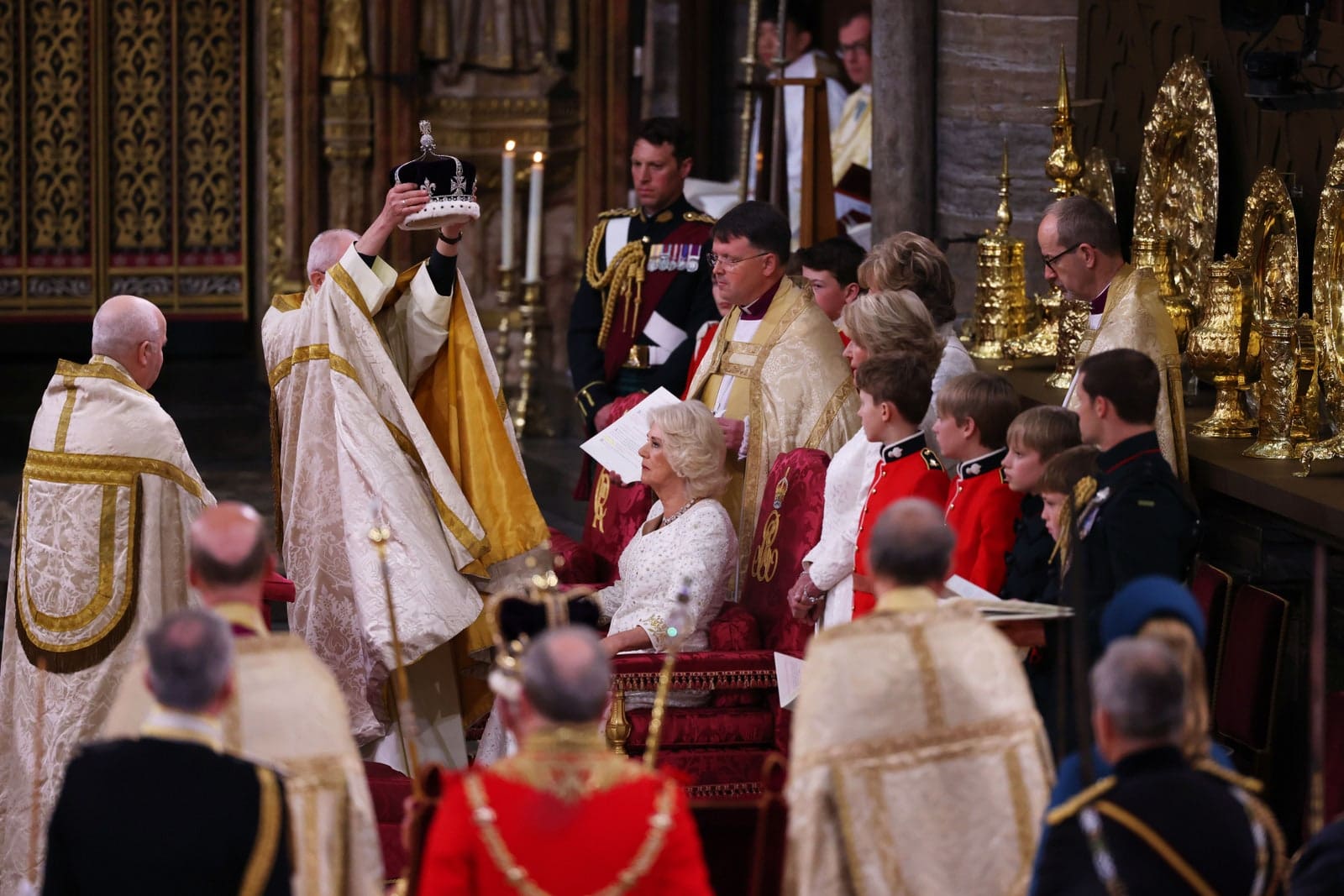Getty Images
Worn by Queen Camilla in today’s coronation service, the crown has a chequered history.
On May 6, the Archbishop of Canterbury officially crowned Queen Camilla at Westminster Abbey during King Charles’s coronation. He did so with a historical diadem: Queen Mary’s Crown, which was lined with a purple velvet cap and an ermine band.
In terms of historical precedent, this was an unusual choice: for previous coronations, the consort has worn a newly commissioned, never-before-seen piece in a grand display of pomp and circumstance. Camilla, however, opted for an existing one. “The choice of Queen Mary’s crown by her majesty is the first time in recent history that an existing crown will be used for the coronation of a consort instead of a new commission being made, in the interests of sustainability and efficiency,” Buckingham Palace said of the choice in a statement.
As the name implies, Queen Mary’s Crown was last worn by the wife of King George V during his 1911 coronation. It is composed of 2,000 brilliant diamonds, with a frieze of quatrefoils and rosettes. There are three large brilliants in the center: Cullinan III, IV, and V diamonds, which respectively weigh 94.4 carats, 63.6 carats, and 18.8 carats. As their names imply, they all come from the Cullinan diamond—which, at 3,106 carats, is the largest ever found. It’s since been carved into nine larger polished stones, many of which became part of the British royal family’s crown jewels, including in the sovereign’s scepter and Imperial State Crown.

Queen Mary’s Crown used to feature the controversial Koh-i-Noor diamond before being reset with the Cullinan V. The diamond’s origins are dubious: according to Encyclopedia Britannica, it was likely looted by Nader Shah of Iran when he sacked Delhi in 1739. When he died, it became the property of an Afghan general. Then, his descendant surrendered to a Sikh ruler Ranjit Singh. When the British empire annexed Punjab in 1849, they took the Koh-i-Noor and gave it to Queen Victoria. (The stone, by then, was considered a curse: “A curious superstition is connected with the stone, which is said invariably to bring misfortune when worn by a man but to be harmless in the case of a woman,” wrote The Observer in 1911.)
This article was originally published on Vogue.
